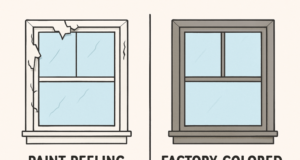Termites can wreak havoc on homes, often causing significant structural damage before their presence is detected. Staying ahead of them requires vigilance, preventive measures, and action at the first sign of trouble. For homeowners who want lasting peace of mind, understanding termite behavior and recognizing the early signs of an infestation is crucial. When proactive steps are combined with professional expertise, the risk of costly repairs can be dramatically lowered.
The risk is even greater in regions with high humidity or older housing stock. Fortunately, services specializing in Termite Control, like the termite control in Cheraw, SC, offer targeted solutions for homeowners needing extra protection or expert intervention. Knowing what to look for and how to respond ensures you’re never caught off guard by these destructive pests.
Protecting your property isn’t just about reacting to damage—it’s about creating an environment where termites can’t thrive in the first place. Understanding attractants and maintaining your home can keep these silent invaders at bay. Implementing best practices now means fewer headaches and more confidence about your home’s long-term integrity.
Taking a few hours each year to inspect and correct potential risk factors can save you thousands of dollars in repairs. Even the most diligent homeowners benefit from trusted advice and periodic check-ins, especially when local climate and building styles make some areas more vulnerable to termite activity.
Common Signs of Termite Infestations
- Hollow-sounding wood that gives way easily to pressure
- Mud tubes or narrow tunnels of dirt along the foundation, walls, or crawl spaces
- Piles of discarded wings near windows, doors, or other light sources
- Bubbling or uneven paint, and warped wood surfaces
According to the US Environmental Protection Agency, these early warning signs warrant immediate attention. Any of these symptoms could indicate termites are active—and often, the damage is already deeper than it appears. Early detection is critical to stopping further structural harm.

Risk Factors That Attract Termites
Termites are drawn to moist, sheltered environments, and several common household conditions act as magnets for them. Moisture from leaky pipes, poorly maintained gutters, or standing water near your home encourages termite activity. Direct wood-to-soil contact—such as untreated deck posts, fences, or firewood stacked against the siding—creates easy access points for colonies to invade.
Old mulch, dead branches, and dense shrubbery crowding your foundation can trap moisture and provide cover for termites. Unattended crawl spaces and basements with inadequate ventilation are also high-risk areas. Even minor oversights, such as leaving cardboard or newspapers outside, can increase your home’s susceptibility.
DIY Steps for Inspecting Your Home
Conducting your own termite inspection is practical and effective in catching infestations early. With a flashlight and screwdriver, even someone with minimal home maintenance experience can look for obvious red flags:
- Check basement walls, crawl spaces, windowsills, and baseboards for telltale mud tubes.
- Tap exposed wood with the handle of your screwdriver—listen for hollow sounds or flaking material.
- Survey windows and door frames, looking for tiny wings that termites often shed after swarming, especially in spring or after rainfall.
- Move mulch, firewood, and garden debris away from the house’s perimeter and check underneath for signs of termite activity.
Performing these simple checks every spring and fall dramatically increases your chances of finding trouble before it spreads. If you’re unsure about suspicious findings, document them with photos to share with a pest professional.
Practical Tips for Preventing Termite Entry
- Seal all exterior cracks, including those in the foundation and where pipes enter the home.
- Store firewood, lumber, and excess building materials at least 20 feet from your foundation.
- Clean gutters and downspouts regularly, ensuring water is directed several feet away from the house.
- Keep shrubs, trees, and other vegetation trimmed so that no part directly touches exterior walls or the roof.
Consistent, seasonal home maintenance forms the backbone of termite prevention. Addressing minor repairs promptly and maintaining a debris-free property line ensures there are fewer places for termites to hide.
Why Seasonal Inspections Matter
Most termites begin new colonies in spring and fall, when rising humidity and temperatures encourage swarming. According to PestWorld.org’s Termite Awareness Week, scheduling home inspections shortly after periods of heavy rain or sudden heat waves is particularly effective for early detection.
Consistent seasonal checks not only increase your chances of finding new termite activity, but also allow you to spot risks—like pooled water or decaying mulch—before pests move in. This proactive approach is especially important for homes in regions with known termite pressure or historic infestations.
Best Practices for Wood Care and Moisture Control
Carefully managing the quality of wood and your home’s moisture levels is critical in deterring termites. Any exposed or exterior wood should be promptly sealed with paint or stain, and all leaks—indoor or outdoor—should be repaired immediately. Consider placing dehumidifiers in basements and crawl spaces, and ensure vents are unobstructed for proper air flow.
For homeowners in humid climates, vapor barriers installed in crawl spaces can dramatically reduce moisture under the home. In addition, regular roof inspections help prevent hidden leaks that might go unnoticed but, over time, create termite-friendly conditions.
When to Seek Professional Help
While homeowners can monitor many signs and risks, the expertise of a trained termite specialist is invaluable when evidence of an infestation arises. If you discover mud tubes, significant wood damage, or live termites, immediate intervention by a licensed professional saves money and structural integrity in the long run. Many reputable pest management companies offer free or low-cost inspections, and prompt action can often contain an outbreak before major repairs are needed.
Your Top Termite Questions Answered
- Are termites only found in old homes?Termites will invade any structure where conditions are favorable, regardless of the home’s age or upkeep.
- Are termites a seasonal problem?While swarming is seasonal, termites are active year-round, particularly in mild or humid climates.
- Can homeowners eliminate termites on their own?Although some DIY treatments are available, proven results typically come from pest professionals using advanced products and techniques.
Ongoing vigilance and prompt responses, combined with insights from specialists, are the best defense against costly termite damage. By keeping moisture at bay, regularly checking your home, and reaching out for professional help when in doubt, you can ensure your property stays safe for years to come.















